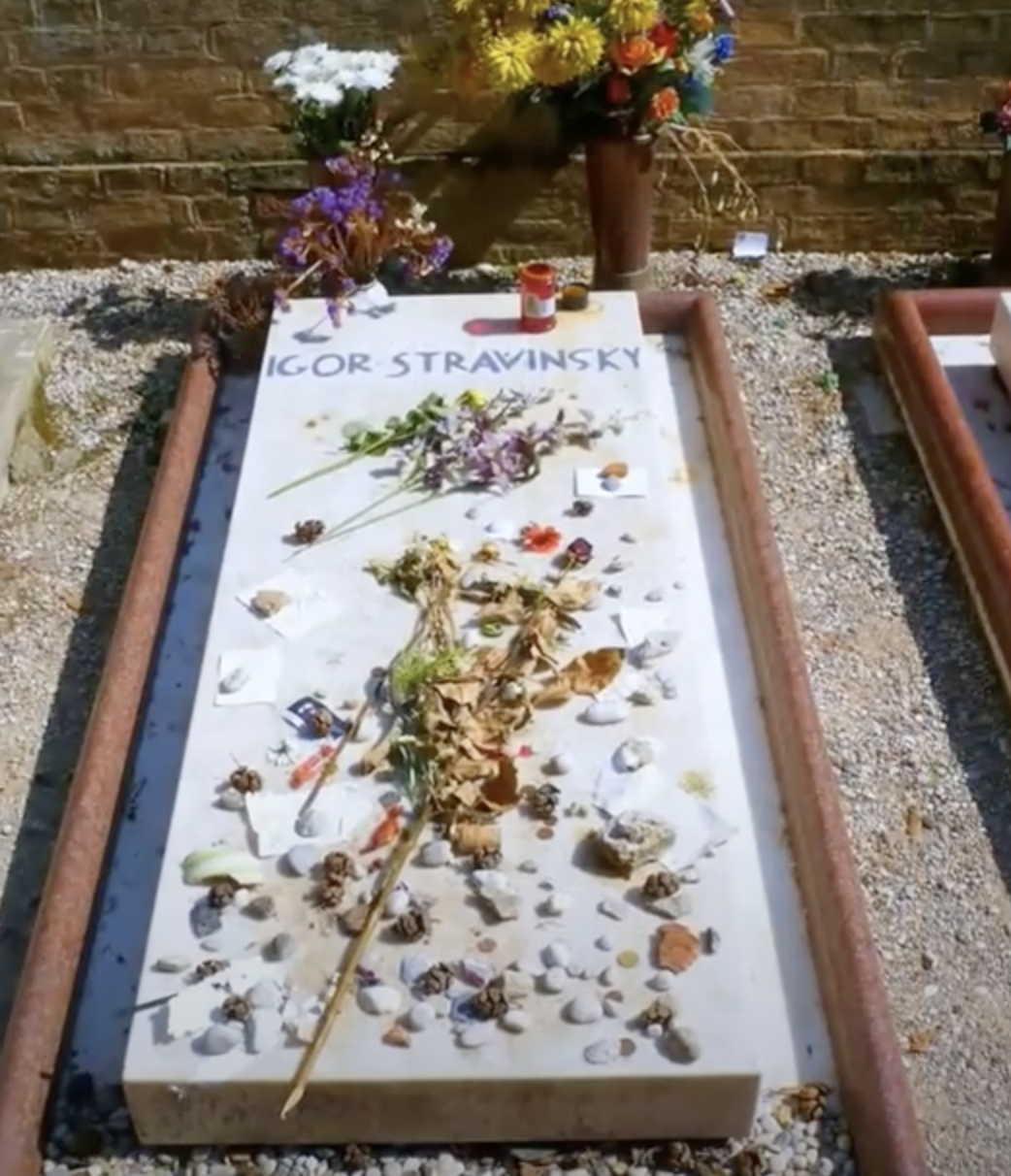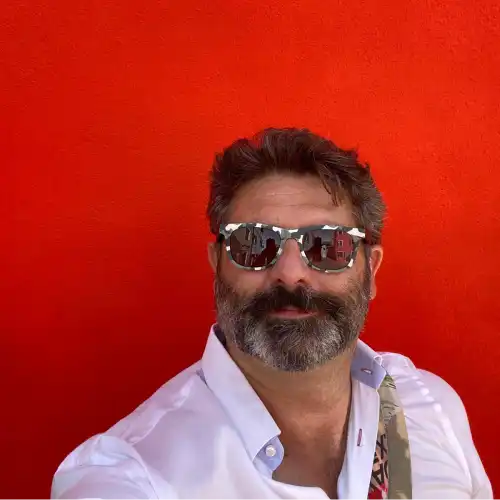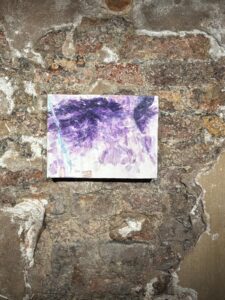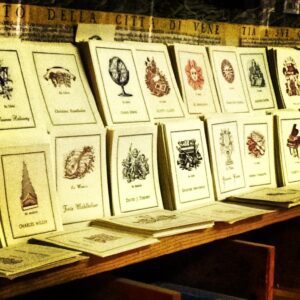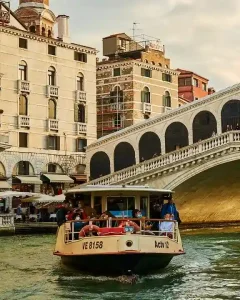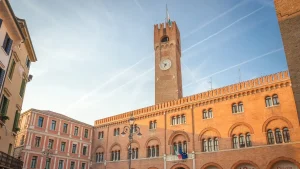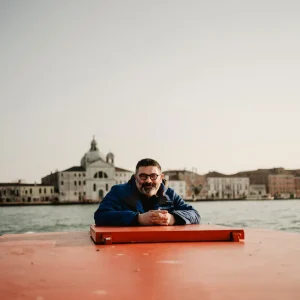San Michele: Venice’s Island of Silence and Eternal Rest
Venice has a way of making everything feel eternal — its palaces reflected in the Grand Canal, gondolas gliding under the Rialto, mosaics glittering in St. Mark’s Basilica. But to truly understand the soul of this floating city, you must cross the water — to San Michele, Venice’s island of silence.
Floating quietly between Venice and Murano, San Michele has been the city’s cemetery since the early 19th century. Behind its solemn red-brick walls rest not only generations of Venetians, but poets, musicians, and artists from every corner of the world — people who, like Venice itself, belonged not to one nation but to the world.
Visiting San Michele isn’t a gloomy experience; it’s an act of reflection. Here, among cypress trees and marble angels, you walk through history, art, faith, and memory — all suspended in the soft light of the Venetian Lagoon. It’s Venice stripped of spectacle and sound — a city reduced to silence, yet still whispering stories.
📜 A Short History of San Michele
Before the Cemetery
The story of San Michele begins long before its transformation into Venice’s cemetery. The island was inhabited as early as the 10th century, home to a Camaldolese monastery where monks lived in prayer and isolation. In 1469, architect Mauro Codussi designed the Church of San Michele in Isola — Venice’s first Renaissance building. Its pure white Istrian stone façade gleams like a piece of light itself, marking the beginning of a new architectural era for the Republic.
For centuries afterward, Venetians were buried in parish churchyards scattered across the islands. Death was local, familiar — part of the neighborhood’s rhythm. That would change under Napoleon.
Napoleon’s Decree — When Venice Ran Out of Space
In 1804, Napoleon, then ruler of Venice, issued a decree forbidding burials within city limits for reasons of hygiene. The lagoon city, with its saturated soil and compact quarters, simply had no room left for the dead. The authorities turned their gaze just offshore — to the islands of San Michele and San Cristoforo, conveniently close and sparsely inhabited.
By 1839, the two islands were united by landfill, forming a single sacred ground. Venice, a city that had conquered the sea, now entrusted its dead to it. San Michele became the city’s official cemetery — a role it still holds today, a calm counterpart to the living labyrinth across the water.
🌲 The Cemetery Today — Stillness Behind Red Walls
Approaching San Michele by vaporetto (lines 4.1 or 4.2 from Fondamenta Nuove or Murano), the first thing you see is a red-brick wall rising straight from the lagoon — austere, fortress-like, timeless. But step through its gates, and the silence changes shape. The air smells of salt and pine. Paths of white gravel lead through cypress trees and small chapels. Sunlight plays across marble names — some famous, others long forgotten.
San Michele feels more like a garden than a graveyard. You’ll find distinct sections for Catholic, Orthodox, Protestant, and Jewish communities — a reflection of Venice’s cosmopolitan history. Here, East and West, faith and art, all rest side by side.
Locals still visit by boat, carrying flowers for loved ones. Funerals glide silently across the lagoon in black boats with white wreaths — a sight at once heartbreaking and beautiful. Death, in Venice, has its own elegance.
🎼 Notable Burials — The Poets and Dreamers of San Michele
San Michele is one of the world’s most extraordinary cemeteries — not for grandeur, but for its poetry. Here, the boundaries between art and eternity blur. Among the Venetian families lie names that shaped modern music, dance, and literature.
🎻 Igor Stravinsky (1882–1971)
The Russian composer of The Firebird and The Rite of Spring rests in the Orthodox section beside his wife Vera. His grave, simple and elegant, is often covered with flowers and notes from fellow musicians. When Stravinsky’s coffin crossed the lagoon in 1971, the bells of St. Mark’s rang out — one artist saluting another.
💃 Sergei Diaghilev (1872–1929)
Founder of the Ballets Russes and mentor to Stravinsky, Picasso, and Coco Chanel, Diaghilev lies just a few steps away. His grave is decorated with ballet slippers left by dancers from around the world — a quiet choreography of tribute. Even in death, he continues to inspire movement.
✒️ Ezra Pound (1885–1972) & Olga Rudge
The American poet and one of modernism’s most controversial figures, Ezra Pound rests here beside his lifelong partner, violinist Olga Rudge. His epitaph — “Who will ever tell the whole story?” — captures both the brilliance and torment of his life. Visitors often leave pebbles or poems, whispering verses to the wind.
📚 Joseph Brodsky (1940–1996)
The Russian-American Nobel laureate loved Venice so deeply he made it his winter home. His essays, especially Watermark, immortalize the city’s melancholic beauty. His grave, marked by a simple wooden cross, has become a site of quiet pilgrimage for readers and poets alike.
🌊 Christian Doppler (1803–1853)
The Austrian scientist who discovered the “Doppler Effect” rests here too — a fitting presence in a city defined by echoes, tides, and sound. His discovery helps us understand the way waves move — something Venetians have known instinctively for centuries.
Beyond these luminaries lie the true soul of Venice: gondoliers, artisans, nuns, and fishermen. Each name tells a smaller story within the grand one. San Michele isn’t a museum of fame — it’s a mosaic of humanity.
⛪ The Church of San Michele in Isola — Venice’s First Renaissance Vision
At the heart of the island stands the Church of San Michele in Isola, designed by Mauro Codussi in 1469 — a turning point in Venetian architecture. Its white Istrian façade gleams against the blue lagoon, reflecting the mathematical harmony of early Renaissance design. Inside, the church is a study in calm — soft light, stone altars, and quiet reverence.
Adjoining the church is the Chapel of San Cristoforo, once part of the neighboring island. Together, they form a sacred ensemble where Gothic devotion meets Renaissance geometry — a perfect metaphor for Venice’s layered soul.
If you love architecture, this is where to linger. Codussi would later design Venice’s masterpieces — Santa Maria Formosa, San Zaccaria, and the upper levels of St. Mark’s Clock Tower — but this was where his vision began.
🌿 Experiencing San Michele — Silence, Reflection, and Light
Silence Speaks Here
Unlike the bustling piazzas of Venice, San Michele invites you to slow down. The only sounds are the wind through the cypress trees, the soft lap of water against stone, and your own footsteps on gravel. It’s a place where silence has texture — not emptiness, but presence.
The Atmosphere
As you wander, you’ll notice how Venice’s history echoes in the diversity of its tombs — Italian, Greek, Russian, Protestant, Orthodox. The cemetery reflects the city’s identity as a meeting point between worlds. Even here, Venice is a crossroads of faiths and cultures, eternally in conversation.
A Different Kind of Beauty
There are no souvenir stalls, no gondoliers calling “Ciao bella.” Instead, there’s the sound of leaves and the faint shimmer of distant bells. San Michele offers a rare kind of beauty — introspective, spiritual, and real. It’s where visitors discover that Venice isn’t only a place to see, but a place to feel.
🚤 How to Visit San Michele
- By Vaporetto: Take line 4.1 or 4.2 from Fondamenta Nuove (5 minutes) or Murano (5 minutes). The island has its own stop, “Cimitero.”
- Opening Hours: 7:30 AM – 4:30 PM in winter; 7:30 AM – 6:00 PM in summer (closed midday — check locally for updates).
- Etiquette: San Michele is an active cemetery. Dress modestly, speak softly, and take photographs respectfully.
🕊️ San Michele with Tour Leader Venice
Visiting San Michele can be profoundly moving — but its full meaning often reveals itself only with context. Many travelers pass it by without realizing what lies behind its walls. With Tour Leader Venice, you can experience the island as locals do: with understanding, reverence, and storytelling.
- 🚤 Private boat transfer directly to the island, away from crowded vaporetto lines.
- 👩💼 Guided exploration with a licensed local expert who brings Stravinsky, Pound, and Brodsky’s stories to life.
- ✨ Custom lagoon itineraries combining San Michele with nearby islands like Murano or Torcello.
- 🕊️ Private reflection time in one of the lagoon’s most peaceful settings.
👉 Explore San Michele and the Hidden Islands of Venice with Tour Leader Venice
🌺 Why San Michele Matters
San Michele is more than a cemetery — it’s a reflection of Venice itself:
- A mirror of history: from medieval monks to Napoleon’s reforms, every layer tells a chapter of Venice’s past.
- A resting place for the world’s culture: composers, poets, scientists — all drawn to Venice’s timeless embrace.
- A space of spirituality: proof that Venice’s soul isn’t just art and trade, but contemplation and faith.
- An authentic experience: untouched by mass tourism, San Michele offers Venice at its most sincere.
🌅 Final Thoughts — Venice’s Island of Silence
Venice dazzles the eyes, but San Michele touches the soul. Here, the city’s restless rhythm slows, and you hear its quiet heart beating through stone and tide. To walk among these graves is to walk through humanity itself — from the anonymous to the immortal, all united by water and time.
For travelers seeking to go beyond gondolas and galleries, San Michele offers something rare: stillness. A reminder that Venice, even in silence, never stops speaking.
👉 Book your Private Lagoon Tour and discover San Michele — Venice’s most poetic island
❓ FAQs — San Michele, Venice’s Island of Silence
Can you visit the Island of San Michele in Venice?
Yes. San Michele is open daily to visitors who wish to explore its peaceful cemetery and Renaissance church. Simply take vaporetto Line 4.1 or 4.2 from Fondamenta Nuove (about 5 minutes). Remember it’s an active cemetery — dress modestly, speak softly, and take photos with respect.
Who is buried on San Michele Island?
San Michele is the final resting place of both Venetians and world-renowned artists — including Igor Stravinsky, Sergei Diaghilev, Ezra Pound, Olga Rudge, and Joseph Brodsky. Their simple graves lie among cypress trees and marble angels, creating one of Europe’s most poetic cemeteries.
Can I visit San Michele with Tour Leader Venice?
Absolutely. Tour Leader Venice offers private boat transfers and expert-led guided tours that reveal the island’s hidden stories — from its monastic origins to the lives of the artists buried there. You can even combine San Michele with nearby islands like Murano or Torcello on a Venice Sunset Tour on a Traditional Bragozzo Boat for a truly soulful lagoon experience.

